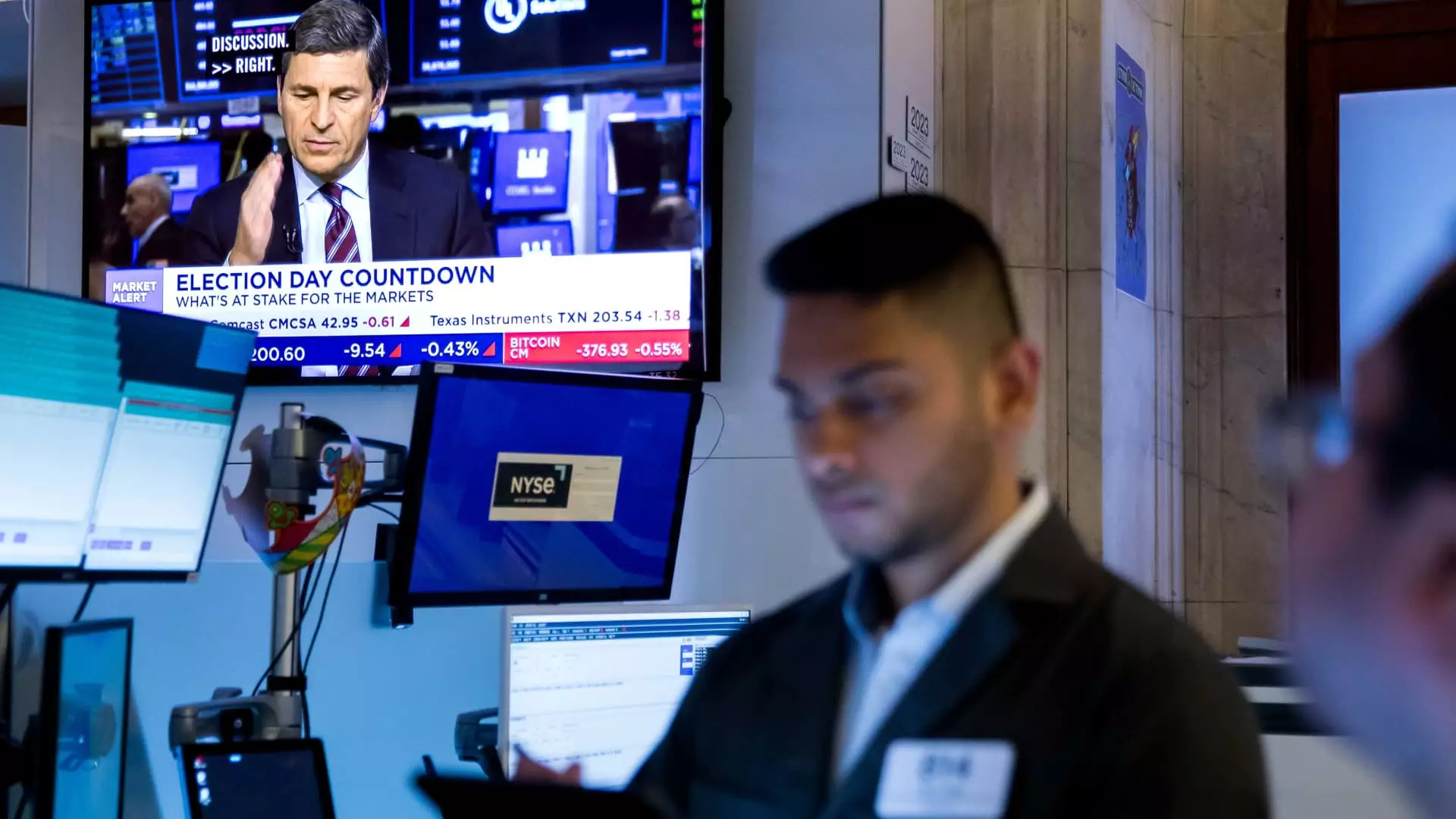In the ever-fluctuating world of stock markets, the anticipation and analysis preceding an event like Election Day can create a tempestuous environment for investors. As daily newsletters such as *Stocks @ Night* offer insights into market movements post-session, it is vital to discern the valuable information they present—especially in light of recent fluctuations and notable declarations from influential investors.
David Tepper, a respected name in the investment community and founder of Appaloosa Management, has recently made headlines with his bullish stance on Chinese investments. Speaking on CNBC, his proclamation to buy into China activities has sparked considerable interest among traders, evidenced by the immediate upwards trajectory of various exchange-traded funds (ETFs). The KraneShares CSI China Internet ETF (KWEB), the iShares China Large-Cap ETF (FXI), and the iShares MSCI China ETF (MCHI) all experienced gains of 11%, 7.8%, and 8.2%, respectively, since his recommendation.
However, an in-depth examination reveals that despite this optimistic surge post-announcement, these ETFs remain a shadow of their former highs. Since October 7, KWEB plummeted 17%, FXI fell by 15%, and MCHI declined by 16.6%. Such fluctuations illuminate the volatility entrenched within the Chinese market and the challenges that persist, regardless of optimistic perceptions from market influencers. This phenomenon of initial excitement followed by rapid corrections signifies the treacherous nature of trading based solely on high-profile endorsements.
A Cannabis Investment Movement Ahead of Election Day
The cannabis sector is another focal point as the anticipation for upcoming state votes in Florida, Nebraska, North Dakota, and South Dakota regarding legalization intensifies. Over the past month, the sector has garnered a wave of positive sentiment, with several companies witnessing significant stock price increases: Canopy Growth surged by 24%, Aurora rose by nearly 8.7%, and Scotts Miracle-Gro climbed roughly 10%. These upward trends speak not only to the burgeoning acceptance of cannabis but also to the market’s speculative nature as investors pivot towards potential revenue growth from legalization.
This speculative excitement, however, is tempered by the need for nuanced analysis surrounding the overall sustainability of these gains. Investors must weigh short-term enthusiasm against long-term viability, especially given past experiences where euphoria over cannabis investments has led to disappointing outcomes post-legalization in various states.
In a stark contrast to the cannabis sector, the water resources segment has emerged as a strong focus due to significant drought conditions, particularly evident in the New York area. The dry spell, noted as the worst since 1869, has resulted in heightened interest for utility stocks and those related to water conservation and management. Companies such as Energy Recovery, Global Water Resources, and Essential Utilities have all seen substantial increases in stock price—9.6%, 16%, and 7.5%, respectively—in response to the pressing demand for effective water management solutions.
While the favorable trends in the water sector reflect a complex interplay between environmental factors and market performance, it raises critical questions about the long-term path for these companies. Will they maintain growth as drought conditions persist or wane as seasonal changes occur? The evolution of water-related stocks emphasizes the blend of environmental consciousness with financial viability, a crucial consideration for today’s investors.
The Broader Market Landscape: Anticipated Earnings and Investor Reactions
Investor sentiment often fluctuates based on upcoming earnings reports and their implications on stock performance. Upcoming releases, such as those from DuPont and Yum Brands, spark curiosity about their potential impact on respective industries. DuPont’s slight increase may signal cautious optimism among investors, while Yum Brands faces the challenge of regaining ground lost amidst broader market fluctuations.
Yet, distinguishing between surface-level recovery and genuine long-term strength remains a pivotal aspect of prudent investment strategies. As seen with companies like Super Micro, recent volatility following short-seller reports is a reminder that markets can be quick to react, often irrationally. The significant decline of about 78% since March emphasizes the need for rigorous diligence when making investment decisions, especially in tech-heavy sectors rife with scrutiny.
Navigating the currents of the stock market—bolstered by genuine economic indicators and tempered by speculative trends—requires a balanced approach. As investors brace for pivotal economic events such as Election Day, staying informed through newsletters and diligent research is essential for making astute decisions in an increasingly complex financial landscape.

